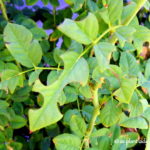Achieving Beauty in a Dry Climate Garden
An attractive outdoor space doesn’t have to equal one that requires a lot of water. In fact, beauty is possible in dry climate garden. However, many people believe that water restrictions mean that you cannot have an a garden that you can be proud of and enjoy. Well, I am here to tell you that you can have a beautiful garden that doesn’t take a lot of water. I’ve lived in dry climates my entire life, from Southern California to the deserts of Arizona and I know it’s possible because I’ve done it!
Navigating the Drought
If you live in the western half of the United States, you know that drought is increasing which means that we may have to rethink the style of our gardens or the type of plants we use. Water restrictions are increasing and that can be disheartening but it doesn’t have to be. The fact is, there are so many possibilities. In the past, we have ignored the climate we live in and grew whatever we wanted, even if it is ill-suited for arid or semi-arid regions because we could always give it the water it required.
Now, we need to rethink that and look more toward plants that will provide the beauty we want while needing less water.
5 Ways to Transform Your Dry Climate Garden
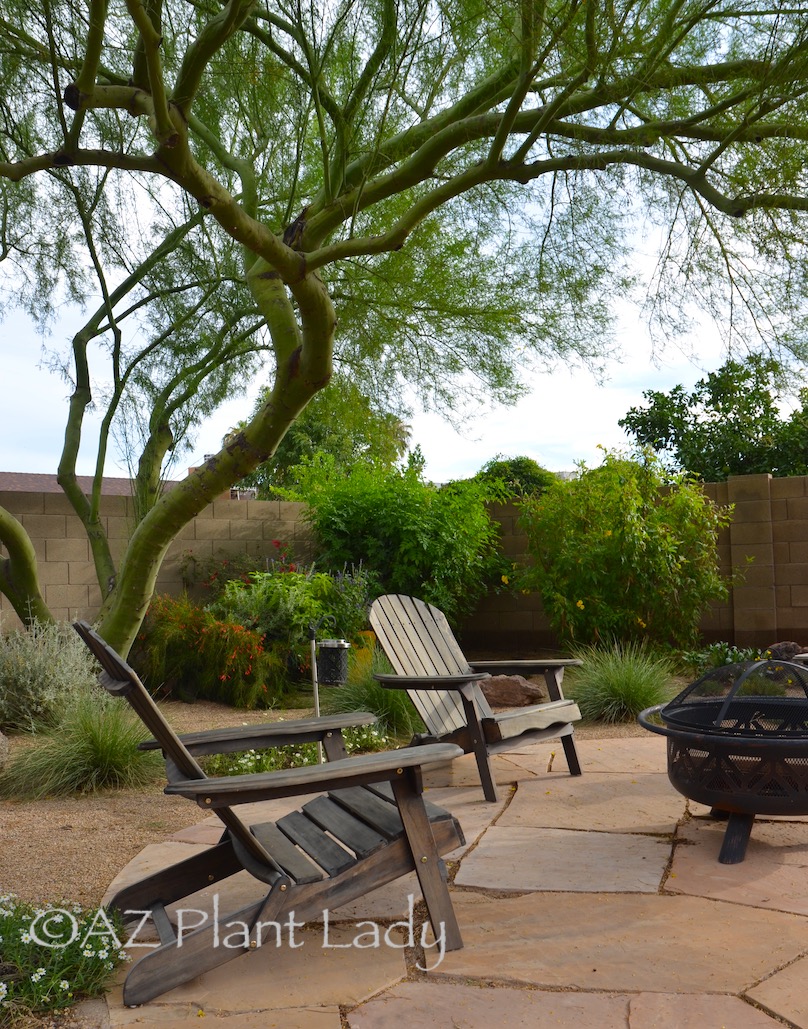
A ‘Desert Museum’ palo verde tree provides shade to plants and a seating area
1. Add trees for shade
The shade that trees provide outside the home reduces the amount of water that plants need. Plants that get shade for all or part of the day require less water as they are protected from the sun’s rays, which increases water loss. Trees can also reduce energy costs within your home during the summer due to the cooling effect of shade. Look for trees native to your local climate or that are adapted for arid regions such as species of acacia, desert willow, palo verde, or mesquite.
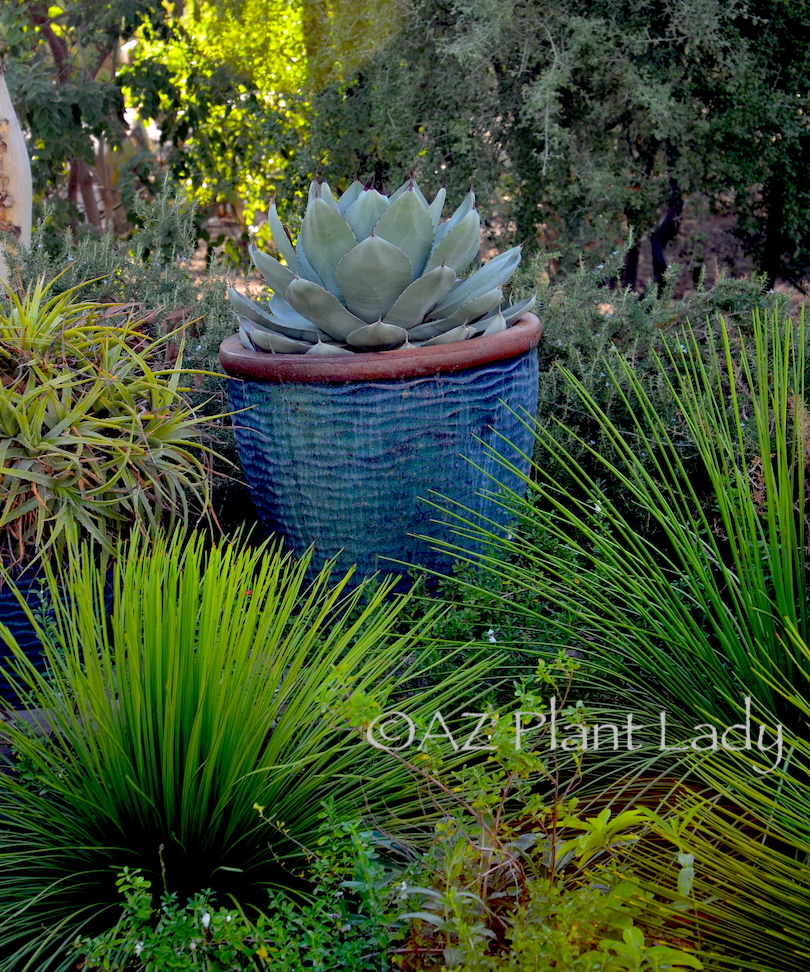
A blue pot filled with artichoke agave surrounded by twin flower agave
2. Create interest with succulents
Succulents are very popular and it’s easy to see with their unique shapes and low-water requirements. They add great texture and interest and need little to no maintenance to look great. If cacti aren’t your style, that is okay as there are other succulents without prickly spines. Succulents mix beautifully with trees, shrubs, and ground covers and there are countless different types for every taste. I love to plant succulents in blue pots for a welcome splash of color, which is a great replacement for thirsty annual flowers.
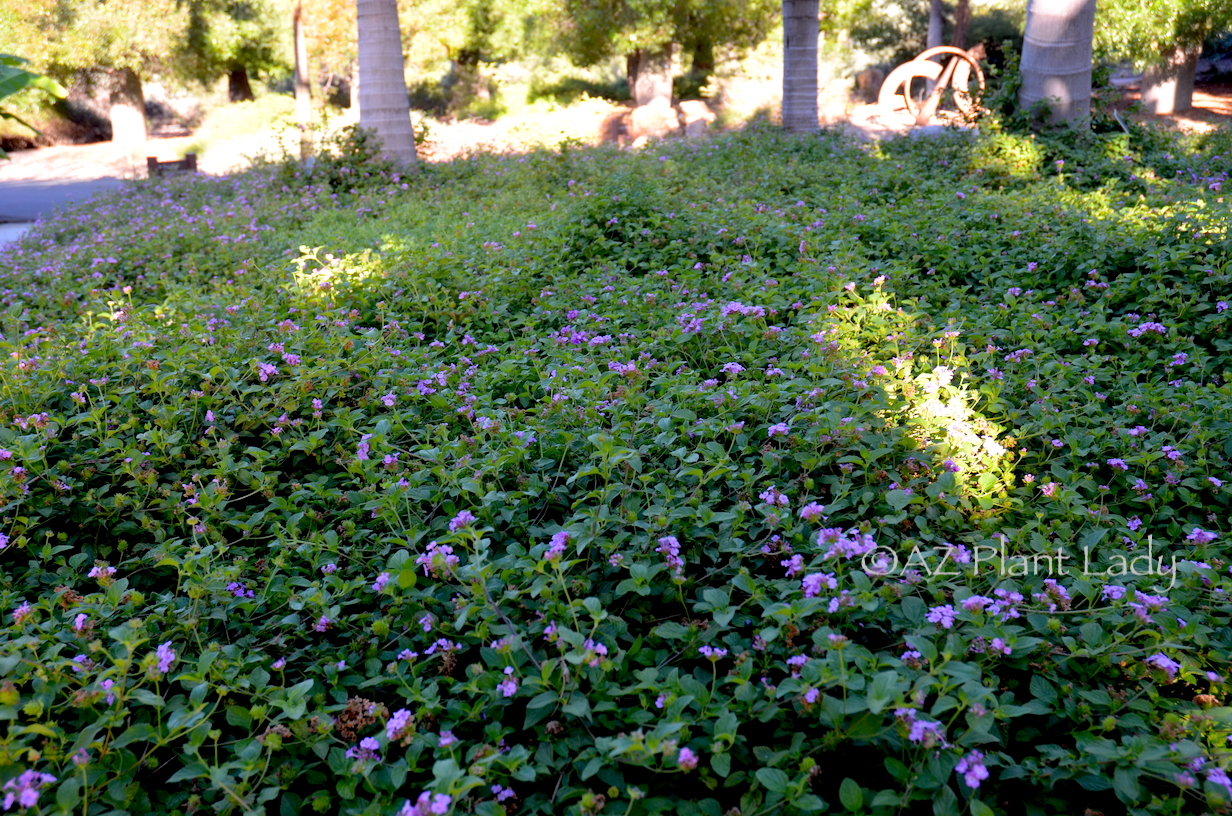
Purple trailing lantana planted in mass at the Los Angeles Arboretum
3. Replace front lawns with lush green ground covers
A carpet of green grass in the front yard is very desirable for many people. But, let’s face it – you likely aren’t using these front yard lawns for anything else but their visual appeal. Personally, I love the look of a mass of green but there are ways to achieve a similar look that uses a lot less water. To achieve this, mass plant low-growing plants together such as lantana, myoporum, natal plum, or ‘Outback Sunrise’. They need less water than a lawn and will add the lush green color and many will add colorful blooms for part of the year.
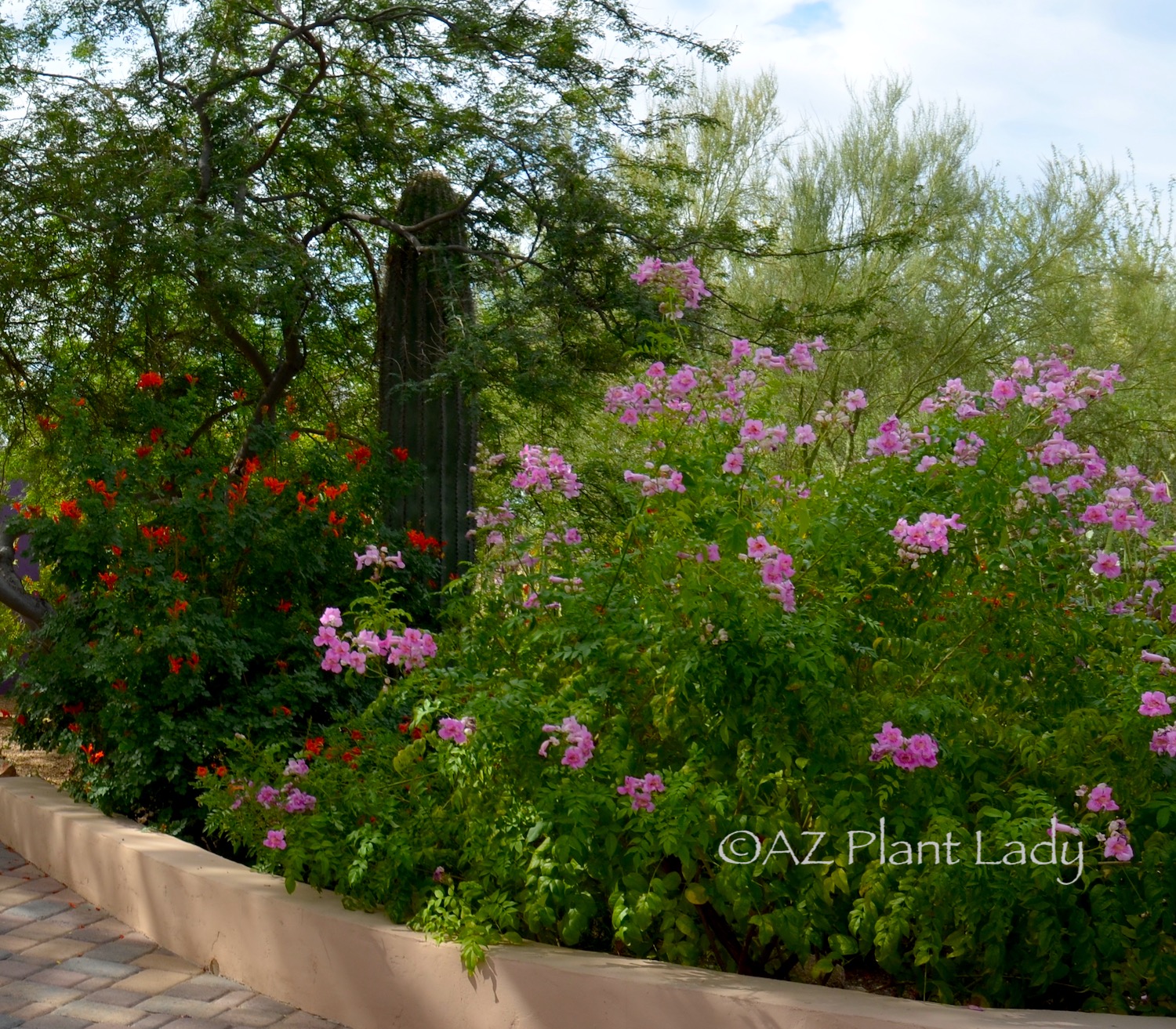
Cape honeysuckle (Tecomaria capensis) and pink trumpet (Podranea ricasoliana) in their natural shapes
4. Allow plants to grow to their natural shape and size
Drive down any street and you are apt to see shrubs pruned into balls and squares. Frequent pruning causes plants to use more water as plants struggle to grow back lost foliage. In my online pruning class, I talk about why frequent pruning is hard on plants and strips plants of their natural beauty. Research how big plants will become at maturity and be sure to allow enough room for them to grow, so unnecessary pruning isn’t needed. Another bonus is that a full-size plant will shade more of the ground, cooling the soil underneath and allows the soil to dry out slowly, which reduces the frequency of watering.
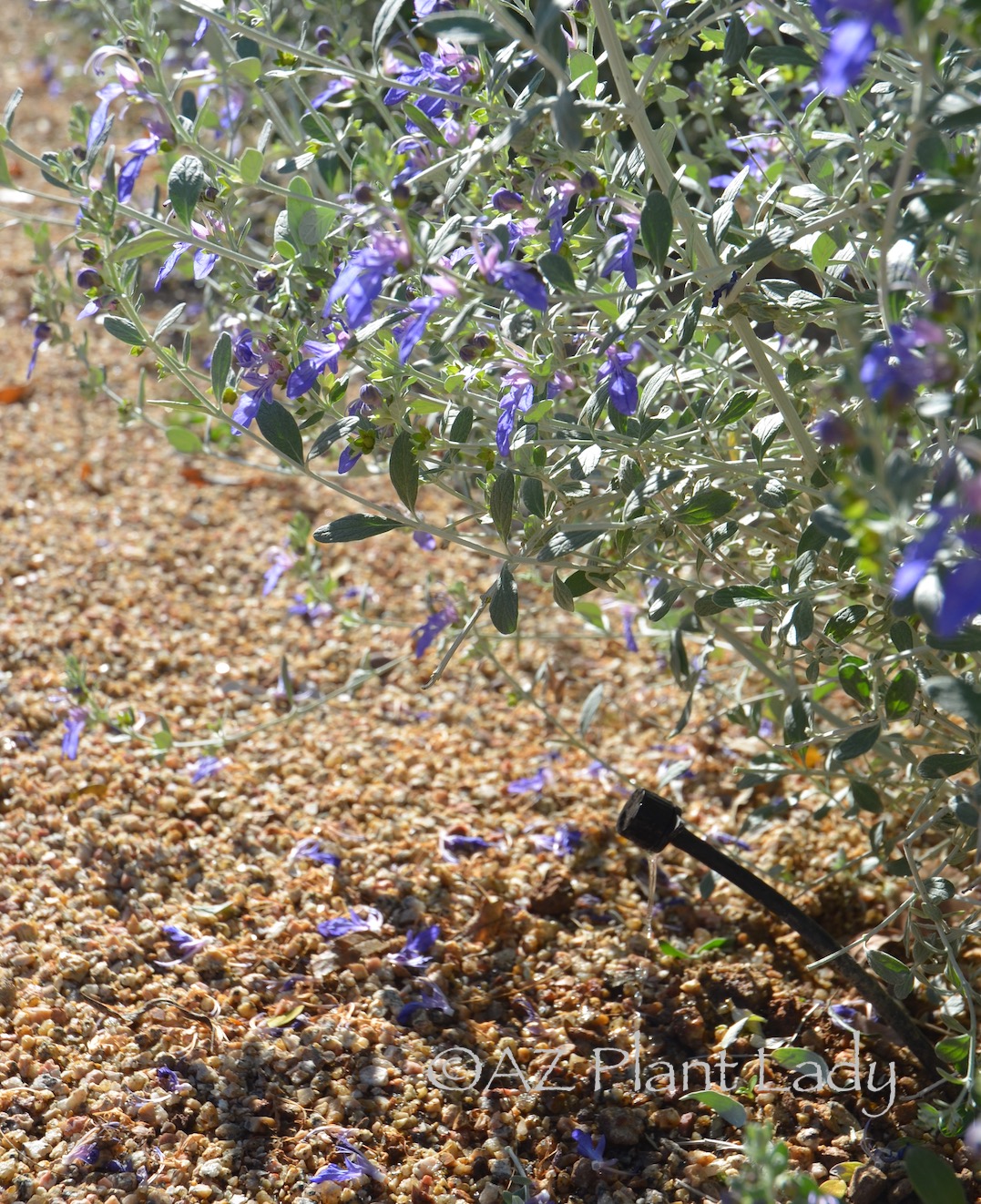
Drip irrigation emitter watering a shrubby germander (Teucrium fruiticans) shrub
5. Water plants deeply and less frequently
Look at how you water your plants. Irrigation methods vary in their efficiency. Sprinklers lose 50% of water to the atmosphere before it hits the ground and an inefficient method for watering plants other than grass. Install a drip irrigation system, which is highly efficient, delivering water slowly to the root zone that allows for deep watering. When we water plants deeply, the soil dries out more slowly and promotes deep root growth that allows plants to go longer in-between watering. Water trees 2 -3 feet deep, shrubs/groundcover 1.5 to 2 feet deep, and succulents 1 foot deep.
Additional things you can do include visiting your local botanical garden and look for featured low-water plants. Your local water provider is a great resource with recommended irrigation scheduling and plants that they recommend.
Saving water in your landscape is absolutely possible and you don’t have to sacrifice beauty. Following these tips will help you to create a beautiful, dry climate garden that needs less water.

 Noelle Johnson, aka, 'AZ Plant Lady' is a author, horticulturist, and landscape consultant who helps people learn how to create, grow, and maintain beautiful desert gardens that thrive in a hot, dry climate. She does this through her consulting services, her online class Desert Gardening 101, and her monthly membership club, Through the Garden Gate. As she likes to tell desert-dwellers, "Gardening in the desert isn't hard, but it is different."
Noelle Johnson, aka, 'AZ Plant Lady' is a author, horticulturist, and landscape consultant who helps people learn how to create, grow, and maintain beautiful desert gardens that thrive in a hot, dry climate. She does this through her consulting services, her online class Desert Gardening 101, and her monthly membership club, Through the Garden Gate. As she likes to tell desert-dwellers, "Gardening in the desert isn't hard, but it is different."






